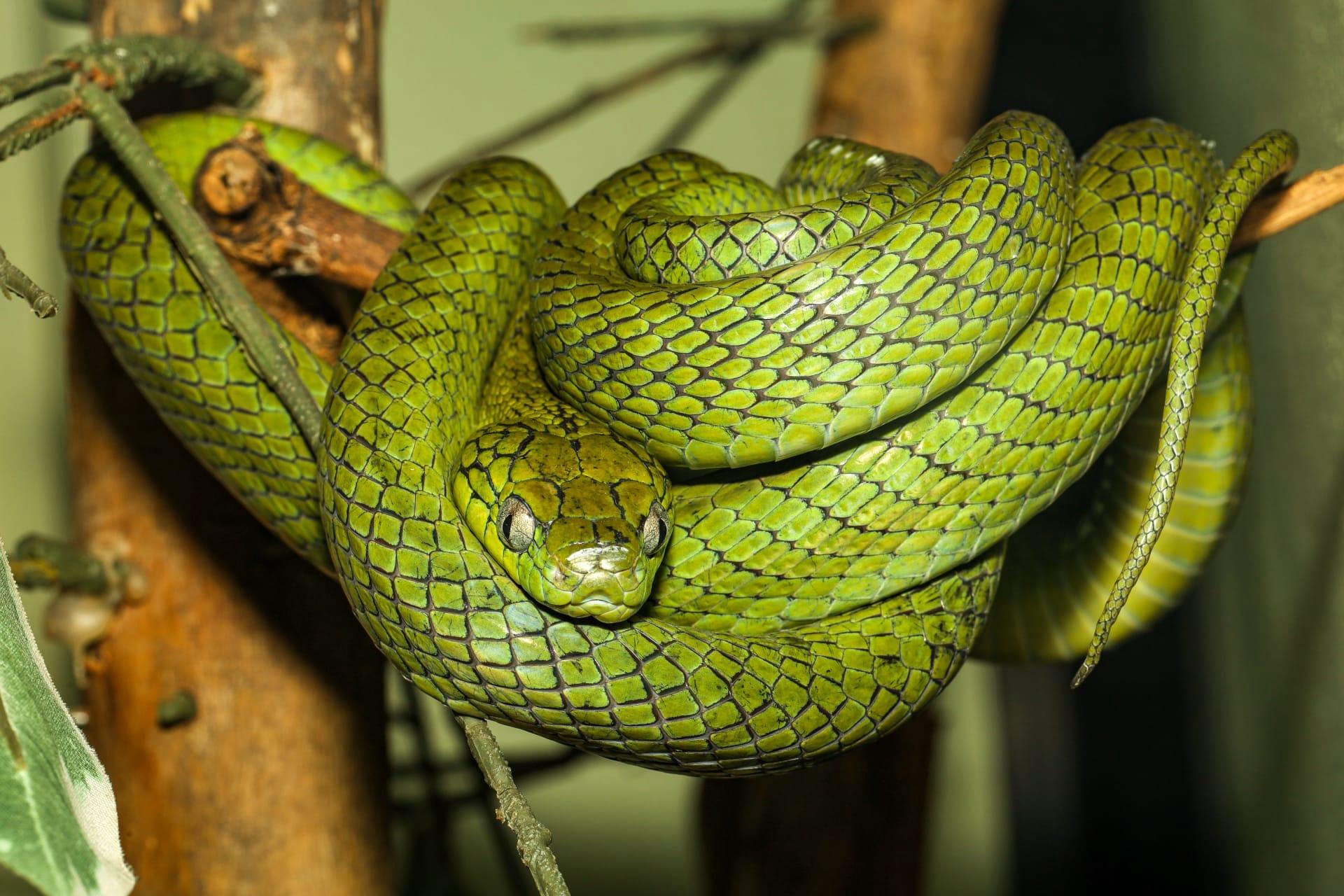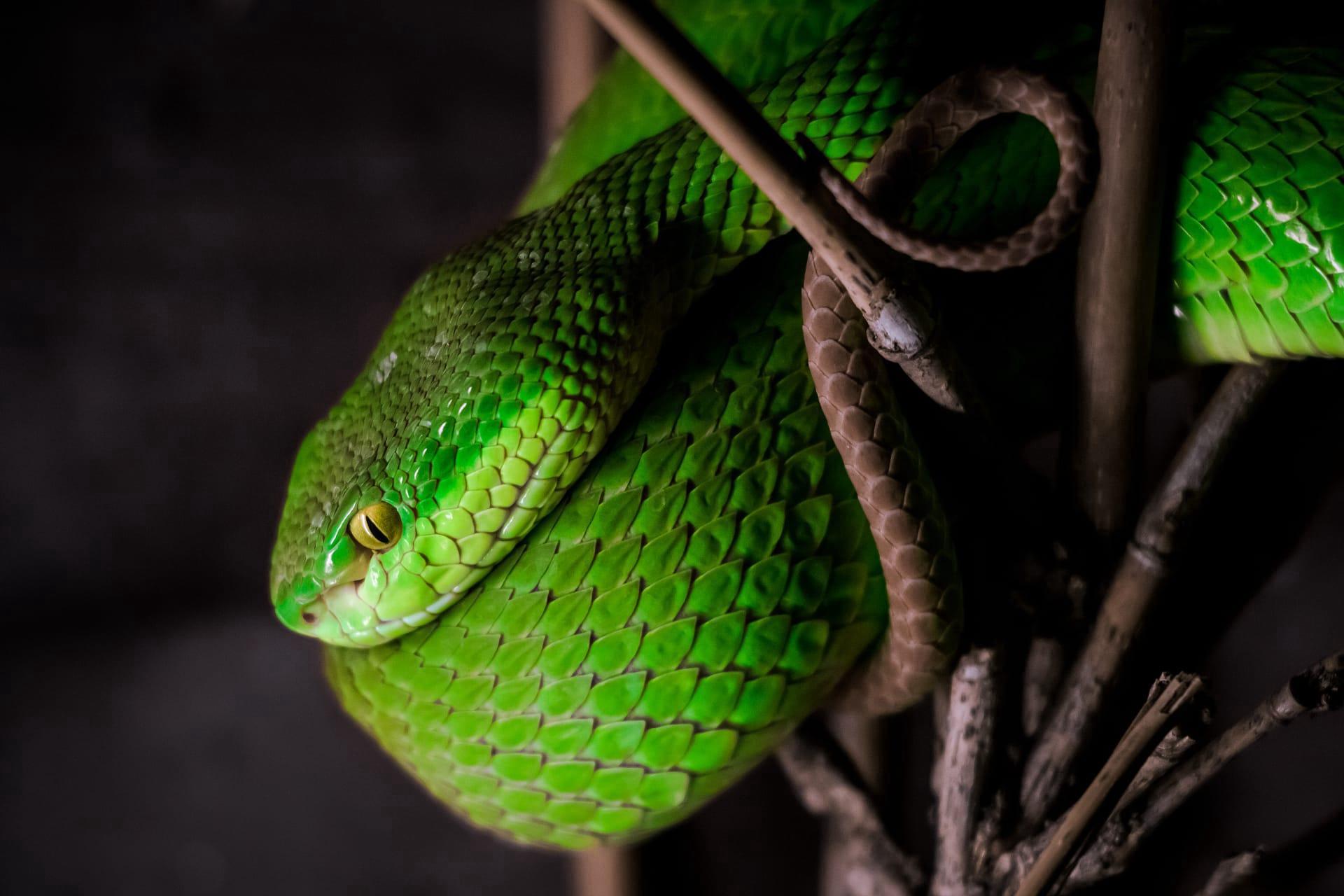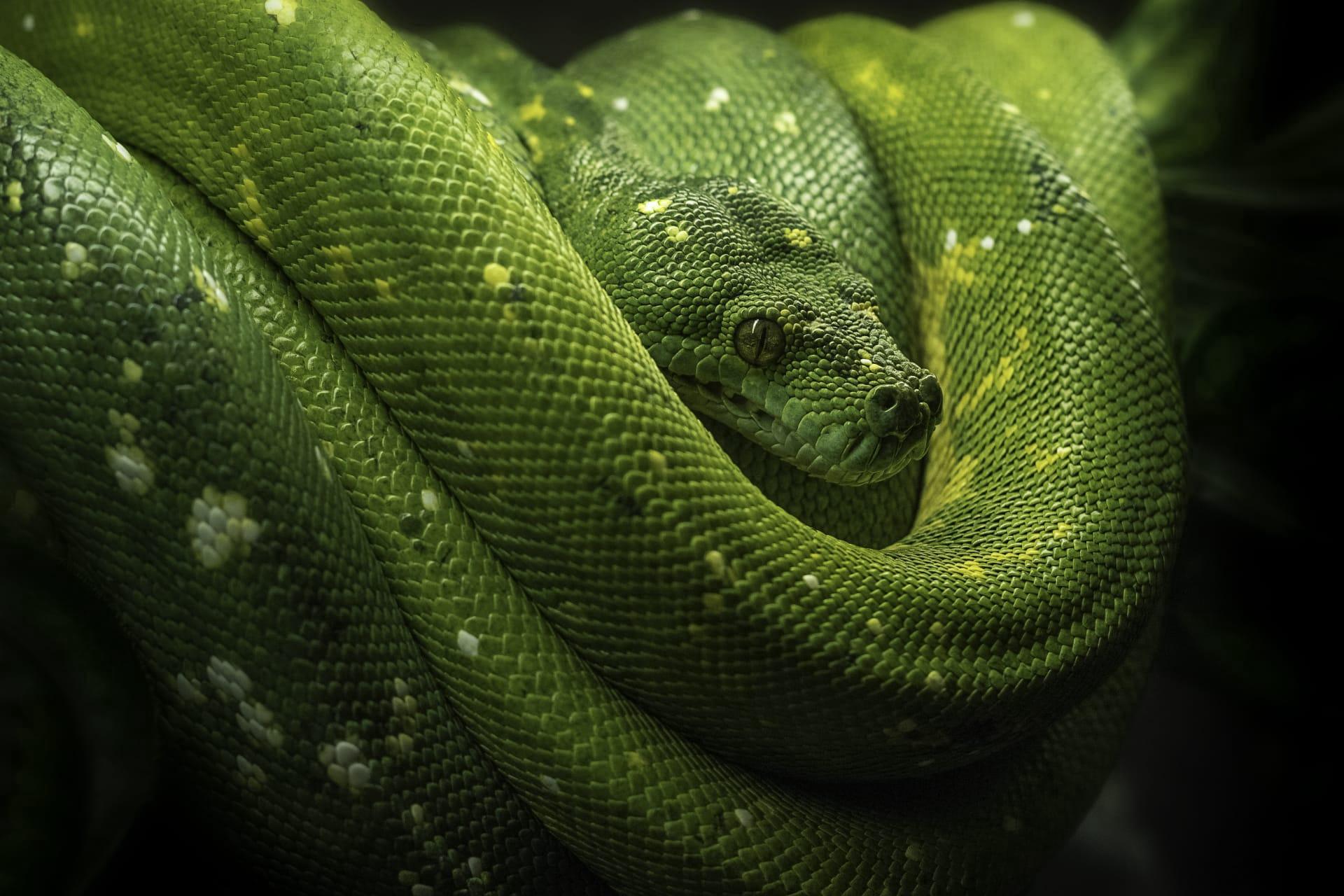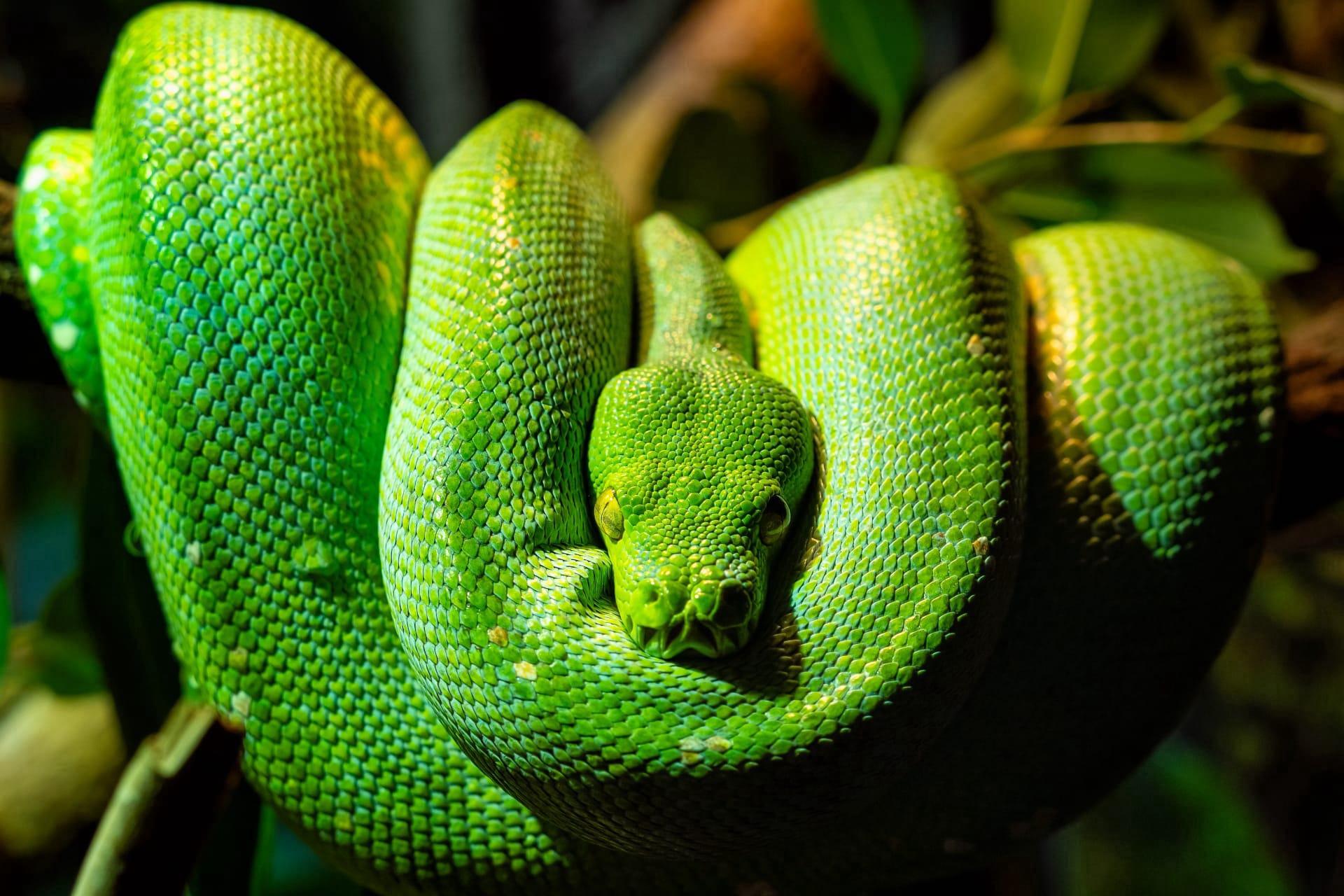Green Tree Python Trivia
- Home /
- Trivia Question /
- Animal /
- Green Tree Python Trivia
1
Question: How long can Green Tree Pythons live in captivity?
Answer: Green Tree Pythons can live up to 20 years in captivity, with proper care including a well-maintained habitat, a balanced diet, and regular veterinary check-ups. Their longevity is a testament to their adaptability and the effectiveness of dedicated care.
Question: What unique physical feature distinguishes juvenile Green Tree Pythons from adults?
Answer: Juvenile Green Tree Pythons are known for their striking color change. They are typically bright yellow, red, or a combination of both when they hatch, but as they mature, they transform into the vibrant green that gives the species its name. This transformation usually occurs over the first year or two of their lives.

2
Question: Is it true that Green Tree Pythons are frequently aggressive?
Answer: This is a common misconception. Green Tree Pythons are often perceived as aggressive due to their defensive posture when threatened. In reality, they are generally shy and reclusive. With gentle handling and proper care, they can become more accustomed to human interaction.
Question: Do Green Tree Pythons pose a venomous threat to humans?
Answer: No, Green Tree Pythons are not venomous. They are constrictors, meaning they subdue their prey by coiling around it and suffocating it. They do have sharp teeth and can bite if threatened, but they do not possess venom.

3
Question: What is the typical diet of a Green Tree Python in the wild?
Answer: In their natural habitat, Green Tree Pythons primarily feed on small mammals like rodents and sometimes birds. They are ambush predators, waiting motionless in trees for unsuspecting prey to come within striking distance.
Question: How do Green Tree Pythons reproduce, and what is unique about their breeding process?
Answer: Green Tree Pythons are oviparous, meaning they lay eggs. Females typically lay between 10 to 25 eggs per clutch. A unique aspect of their reproduction is that the female coils around the eggs and shivers to generate heat, thereby regulating the temperature to ensure the eggs' healthy development.

4
Question: How do Green Tree Pythons adapt to their arboreal lifestyle?
Answer: Green Tree Pythons have a prehensile tail and a slender, muscular body, allowing them to grip branches securely and move gracefully through the trees. Their green coloration provides excellent camouflage among the foliage, aiding in both predation and protection from predators.
Question: What role do Green Tree Pythons play in their ecosystem?
Answer: Green Tree Pythons play a crucial role as both predator and prey in their ecosystem. As predators, they help control the population of small mammals and birds. As prey, particularly in their juvenile stage, they provide food for larger predators, thus contributing to the biodiversity and balance of their habitat.

5
Question: Can Green Tree Pythons recognize their owners or display affection?
Answer: While Green Tree Pythons can become accustomed to their owners and tolerate handling, they do not display affection in the way mammals do. They may recognize their caregivers through scent or routine but do not form emotional bonds as pets like dogs or cats might.
Question: How does the environment in which Green Tree Pythons are kept affect their health?
Answer: The environment is critical for the health of Green Tree Pythons. Factors like temperature, humidity, and lighting must be carefully regulated to mimic their natural habitat. Inappropriate environmental conditions can lead to stress, susceptibility to illness, and overall poor health.